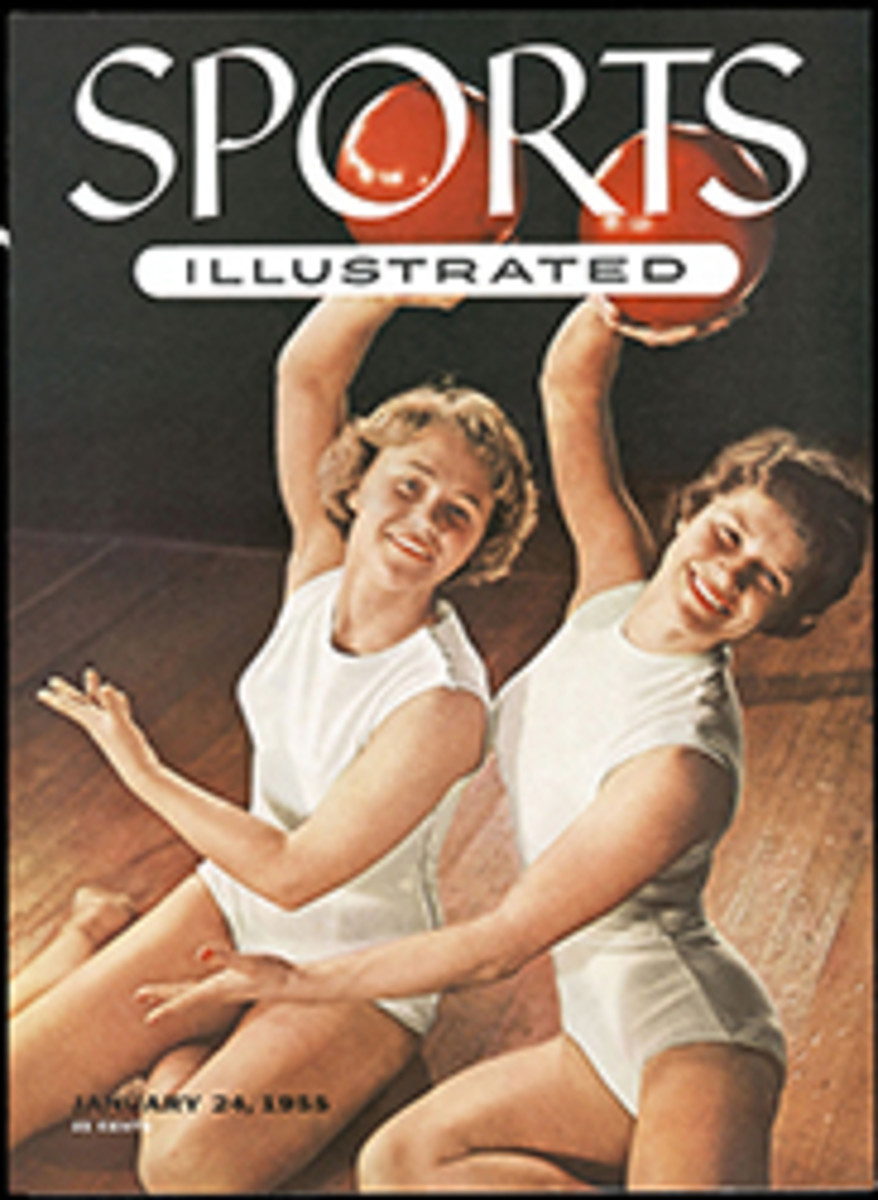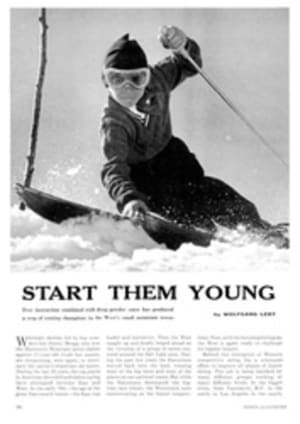
Especially for beginners but useful for golfers of all degrees of skill
In golf, all the power generated by the body action must reach the club through the action of the hands. Many beginners fail to get the left hand placed properly and comfortably on the club. In this regard, they would do well to consider the construction of the club itself. All golf clubs are built with what can be termed a "hooked-in face"—that is, the face, the part of the club head which meets the ball, is not built truly parallel to the line of the shaft but is hooked in, as illustrated in the diagrams at the bottom of this page.
Consequently, if a golfer aligns himself so that the shaft is square to the line of flight, the face of his club will actually be pointed to the left of the desired line. Furthermore, his left hand, by being too much in front of the club, is in a weakened position for the entire stroke.
In order to correct these faults, the golfer should tilt the shaft forward—place his hands so that they ride slightly ahead of the club head, not behind it. The left hand then assumes a strong and natural position. Simultaneously, the face of the club is then poised absolutely square to the line of flight. Some beginners hesitate to adopt this alignment for fear of slicing but, actually, the incorrect position encourages slicing and the correct position does not.
from JOE NOVAK, pro at the Bel-Air Country Club
TWO PHOTOS
TWO DIAGRAMS
below: diagram A, the hooked face of golf club; diagram B, with shaft at right angle to line of flight, club head faces to left of line
ILLUSTRATION
correct position, shaft tilted forward to bring the club face perpendicular to line of flight
NEXT WEEK'S GUEST PRO: JOE BELFORE ON EXECUTING THE TRAP SHOT

